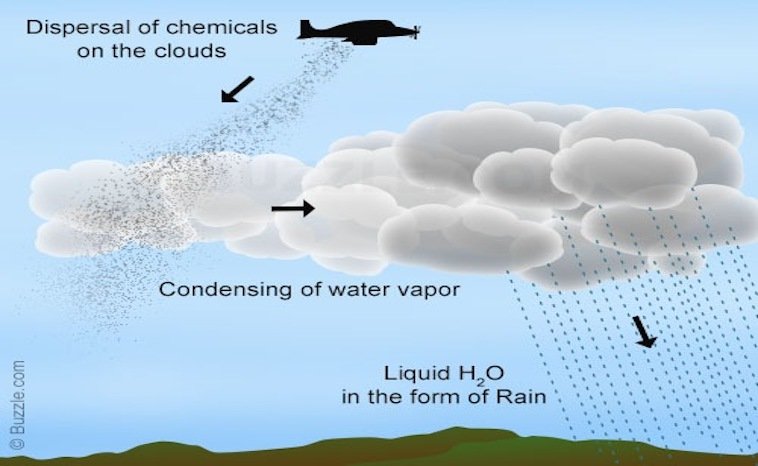Niederschlag durch Wolkenimpfung

In den 1940er Jahren fanden Wissenschaftler heraus, wie man es in einem Labor regnen lässt. Jetzt können sie es auch draußen regnen lassen. Lies weiter, um mehr über das Verursachen von künstlichen Niederschlägen zu erfahren.
The concept is quite simple: cloud seeding involves adding things to clouds that cause rain or snow to fall. Why would scientists want to do this? It works? Scientists have been pursuing this process since the 1940s. In the 1940s, atmospheric scientist Bernard Vonnegut figured out how to produce snow in a laboratory. First, he discovered that silver iodide particles could cause supercooled clouds of water vapor to freeze. Once frozen, these clouds are used to produce snow. Using silver iodine as a framework, water molecules form a crystalline state. A crystal means the water is frozen.
Control the weather with cloud seeding
Once they figured out how to make snow in the lab, how did they do it with clouds? Scientists need to know the size of water droplets in clouds in real time. Without this information, they would not be able to calculate the amount of silver iodine needed. In addition, they did not know how a cloud develops after so-called seeding. A breakthrough in technology has allowed them to put their laboratory experiments into practice. Katja Friedrich, an atmospheric scientist at the University of Colorado, used two small planes to fly through a cloud bank in Idaho. They launched a plane that circled between two ground-based radars and dropped canisters that dispersed silver iodide into the clouds. The same aircraft also flew through the cloud while streaming silver iodide from its wings. Another aircraft loaded with cloud gauges moved on a vertical path to take measurements.
At first nothing happened, but after a while the water drops began to react to the silver iodine. The cloud’s water particles became clearer as they hit the silver iodide and froze. After a few hours, the snowflakes had grown from a few micrometers in diameter to 8 millimeters. At 8 millimeters the water turned to snow and fell to the ground.

Bildnachweis: Buzzle
Photo credit: BuzzleWhy cloud seeding?
Governments around the world are using cloud seeding to bring rain to their drier regions. Some people like the idea, others are against it.
Reasons:
- This technique has proven successful in areas with water scarcity.
- It prevents damage to crops in certain regions caused by too little rain.
- It can be used to suppress adverse conditions such as fog and hail at airports.
- This technique can promote tourism by adjusting the weather conditions in some typical dry areas for tourists at will, thus also contributing to its economy.
Reasons against:
- The use of silver iodide, potassium iodide, etc. and their long-term effects are still being examined.
- Using aircraft to seed clouds is expensive.
- In some cases, capturing the amount of rain can become a problem, which can lead to flooding in certain areas.
- This process is also believed to cause an increase in rainfall in certain areas. In addition, there may be a change in weather conditions in other neighboring regions. As a result, it can have a negative impact on other rainfall areas
The Earth and its atmosphere have changed and evolved for thousands of years. Whether seeding the clouds is a good idea or not remains to be seen. Only time will tell what effect seeding the clouds really has.
